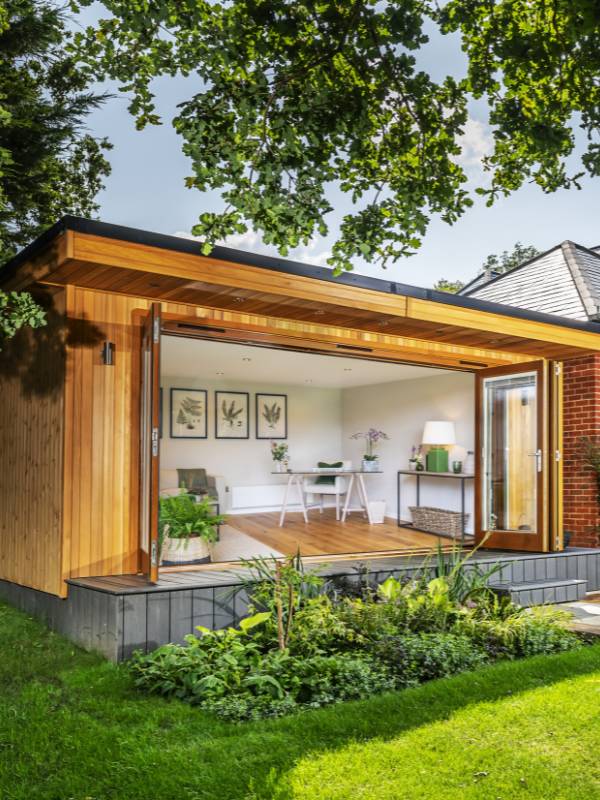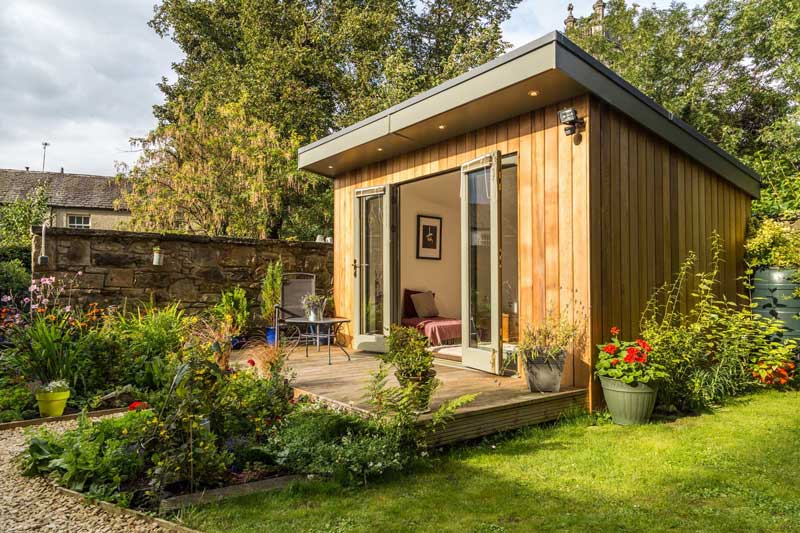Top Advice On Planning Permission On Garden Buildings
Wiki Article
What Planning Permission Is Required For Garden Rooms As Well As Other Structures?
If you're thinking of the construction of conservatories or garden rooms or outhouses as well as garden offices the size limitations can determine whether planning permission is required. Here's a list typical size requirements that could make you need permission to plan.
Planning permission is typically required for detached outbuildings in the event that its total area including outbuildings that are already in place as well as the space around the house exceeds 50 percent.
Height Restrictions
One story buildings The maximum eaves must not exceed 2.5 metres, and for roofs with two pitches, or any other roof type it shouldn't be more than 4 meters.
If the building is within 2 meters of a property boundary the height must not be more than 2.5 meters.
Floor Area:
The building code could be required for buildings that are larger than 30 square meters, even though planning permission isn’t required.
Distance from borders:
If the building is less than 2 meters distance from a border, a planning permit is required when the height exceeds 2.5 metres.
Building Usage
While not strictly a limitation on size, the planned purpose of the garden will determine whether planning permission is required. If, for instance, the space is to be used to house residents or to manage a small-scale business, then planning permission could be required.
Permitted Development Rights:
Permitted Development Rights Permitted Development Rights are governed by certain conditions and limits on size. These rights may vary depending on whether or not the property is within a conservation area.
Conservatories & Extensions
In general an extension of one story at the rear of a detached property the the maximum depth is 4 meters and for semi-detached houses or terraced homes it's 3 meters. This can be increased by 8 meters for detached homes and by 6 feet for semi-detached and terraced homes, depending on the circumstances.
The maximum height of a single-story rear extension must not exceed 4 meters.
Side Extensions
Side extensions should not be any more than the original house and should not be more than 4 meters in height.
Volume Restrictions
In certain areas (such as conservation areas or Areas of Outstanding Natural Beauty) the addition of a construction that increases the size of the house in excess of 10 percent or 50 cubic metres (whichever is larger) may need planning permission.
Front Extensions
Planning permission is usually required for extensions that extend past the front that faces the road that was the initial home.
Verify with your local authority as rules can differ depending on local councils and conditions on the property. Even when planning permission isn't needed the building regulations approval could be needed for safety and structural integrity for structural integrity reasons. Follow the best what size garden room without planning permission for site advice including best electric heater for cabin, insulated garden rooms, conservatories and garden rooms, copyright garden room, how to lay decking on soil, what size garden room without planning permission, outhouses, out house for garden, garden rooms near me, outhouse and more.

What Is The Neighbourhood Plan Permission To Garden Rooms, And So On.?
In determining whether permits are required to build garden office, garden rooms or conservatories along with outhouses or outhouses in the vicinity, it's crucial to consider whether neighbors are concerned. Here are the main elements to be considered overlooking, privacy and Extensions.
Planning permission is required if the new structure could result in privacy being lost by overlooking neighboring properties. It will guarantee that the construction doesn't adversely impact the lives of the residents within the vicinity.
Loss of light or shadows:
If the proposed building will likely to shadow or result in a substantial reduction in light to neighboring properties, planning permission might be required. Local planning authorities evaluate the effect that sunlight and light have on homes nearby.
Noise and Disturbance
It is necessary to obtain planning permission when the space is used to create noise, such as for an office in the home that customers can visit an office, workshop or music room. The noise levels must be within a certain range and shouldn't disturb neighbors.
Visual Impact & Character
The design, size and appearance of a new building must fit in with the surrounding neighborhood. Planning permits ensure that the proposed development does not affect the aesthetics of the neighborhood and is acceptable visually.
Boundary Proximity
Planning permission might be required for constructions that are located near the boundary of a property in particular in the case of structures that are higher than 2,5 meters, and is within 2 meters. This is to stop conflict and negative effects on neighbouring properties.
Shared Access Rights as well as Rights of Way
If the construction affects shared access points or rights of way, planning permission is necessary to ensure that these are not obstructed or negatively affected.
Refusals from Neighbors:
The right of consultation with neighbors is an essential part of the planning process. Planning authorities will take into account the objections of neighboring residents when deciding to grant permission.
Impact on Values of Properties:
Although not always a major aspect, significant changes that could affect the value of homes in the vicinity may affect the necessity to obtain planning permission. The local authority will weigh these effects when deciding.
Covenants and Deed Restrictions
If you have an agreement or deed restriction for your property, it may require that you comply with the restrictions regardless whether planning permission is granted. These agreements could limit the types of structures that can be built, which could impact the peace of the neighborhood.
Construction Disturbance:
Permission to plan may be granted in order to resolve concerns regarding disruptions that may occur during construction, such as dust, traffic and noise. The construction may have conditions on the construction to minimize its impact on neighbours.
Infrastructure Impact:
If the building's construction puts an additional strain on infrastructure within your neighborhood (e.g. drainage, parking or road usage) A planning permit assures that the impact will be evaluated and dealt with in a manner that is appropriate.
Consultation of the Community
In some instances, it may be necessary to seek out a larger community, particularly when dealing with more complex or controversial projects. This will allow for more democratic decision making taking into account the opinions of the local community.
In the end, the neighborhood's concerns play an important role in obtaining planning permission for conservatories or garden rooms. To ensure that the development will not have an adverse impact on the quality of life and privacy as well as lights, noise levels or the general character of the area, it's important to check the plans. Contact the local planning authority early on in the process to address these concerns. Check out the recommended how big can a building be without planning permission for site tips including what size garden room without planning permission uk, what is a garden room, copyright outbuildings, garden rooms brookmans park, copyright outbuildings, garden room permitted development, copyright outbuildings, garden rooms near me, outhouse uk, how to get power to a garden room and more.

What Are The Location Restrictions For Garden Rooms Etc?
Planning permission might be required for conservatories, garden rooms and outhouses. These are the most important elements to take into consideration when choosing a location proximity to boundaries:
The building's height within 2 meters of the property line must not exceed 2.5 m in height. If the building's height exceeds those limits, a building permit is needed.
Front of the property:
The construction of structures on the principal elevation of a house (the front side) generally require permission from the planning department, since the permitted development rights do not generally allow for forward extensions or building.
Aspects of the Property
If the extension extends past the current wall, it is likely to require permission for planning.
Rear of the property:
There are height and size limitations for rear extensions. If they exceed permitted limit for development, then the planning permission must be sought out.
Designated Zones
Stricter controls apply in conservation zones, Areas of Outstanding Natural Beauty, National Parks and World Heritage Sites. Planning permits may be required for any new construction, no matter how large.
List Buildings
The properties that are listed as listed have more strict rules. No matter where the structure is situated on your property, you'll require planning permission as well as listed building consent for any extensions or modifications.
Green Belt Land:
The construction of green belt land is heavily restricted to preserve open space. In most cases, permits are required for construction or major changes.
Areas prone to flooding:
If the property is in a flood risk zone there are additional rules to ensure that the construction does not exacerbate flooding risks. Planning permission, and perhaps an assessment of the risk of flooding could be required.
Urban vs. Rural settings:
In urban areas, rules differ from those found in rural zones. For example, rural properties may have more lenient restrictions on the dimensions and placement of outbuildings, however this can vary widely.
Highways, Public Rights of Way and Public Rights of Way
If the building is located near roads, highways, or public right-of-ways, planning approval may be required in order to keep it from obstructing the view, safety or access.
Shared ownership of or leasehold land
For leasehold properties or are part of a shared ownership scheme, additional approvals from the freeholder or managing entity might be necessary, and planning permissions may still be required based on the local laws.
Adjacent to Other Structures
Planning permission is required if the new structure will be built next to an existing structure or structure, in particular those that are on adjacent properties. This will ensure that there isn't any negative impact on nearby buildings or land.
Always consult with your local planning authority for advice specific to your property and the area it is located. There are different regulations depending on the local policies. To avoid legal problems it is crucial to comply with the restrictions that apply to you. Check out the top extension or garden room for website info including garden rooms near me, copyright outhouse, Tring garden rooms, herts garden rooms, Tring garden rooms, ground screws vs concrete base, what size garden room without planning permission, garden outhouses, 4m x 4m garden room, garden rooms in St Albans and more.
